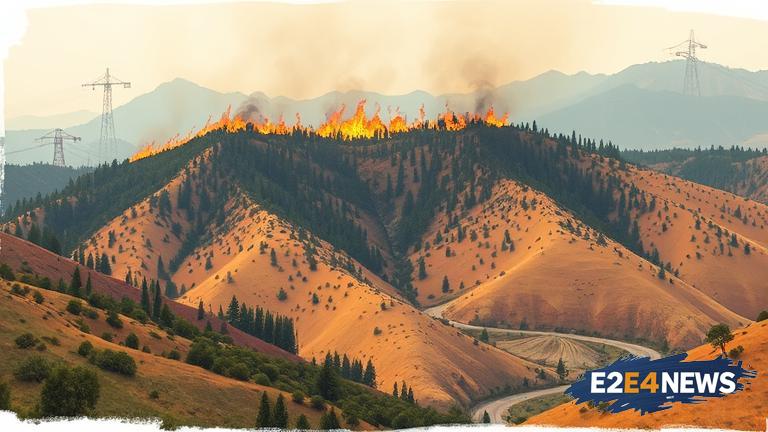California has been plagued by devastating wildfires in recent years, with the 2018 Camp Fire being the deadliest and most destructive in state history. The fire burned over 153,000 acres, destroyed nearly 19,000 structures, and claimed 85 lives. The aftermath of the disaster led to a renewed focus on wildfire prevention and mitigation efforts. One key strategy is the use of prescribed burns, which involve intentionally setting fires in controlled areas to reduce fuel loads and promote healthy forest ecosystems. However, prescribed burns can be controversial, as they may pose a risk to nearby communities and wildlife. Another approach is the creation of defensible spaces around homes and buildings, which can help prevent the spread of wildfires. This can be achieved through the removal of flammable vegetation, the use of fire-resistant materials, and the creation of fire breaks. Additionally, California has implemented various regulations and laws aimed at reducing the risk of wildfires, such as the requirement for utilities to maintain and inspect their equipment to prevent sparks and electrical malfunctions. The state has also invested in wildfire research and development, including the use of advanced technologies such as drones and artificial intelligence to detect and respond to fires. Furthermore, there is a growing recognition of the importance of indigenous knowledge and traditional land management practices in preventing and mitigating wildfires. For example, some Native American tribes have used controlled burns for centuries to promote healthy forests and reduce the risk of catastrophic fires. Despite these efforts, California’s wildfire season continues to pose a significant threat to communities and ecosystems. Climate change is exacerbating the problem, as rising temperatures and changing precipitation patterns create conditions that are ripe for wildfires. Moreover, the state’s population is growing, and more people are moving into wildland-urban interface areas, which increases the risk of wildfires. To address these challenges, California will need to continue to invest in wildfire prevention and mitigation efforts, including education and outreach programs, infrastructure upgrades, and research and development. The state will also need to work with federal and local agencies, as well as private landowners and communities, to develop and implement effective strategies for reducing the risk of wildfires. In addition, there is a need for greater awareness and understanding of the risks and consequences of wildfires, as well as the importance of taking proactive steps to prevent and prepare for them. By working together and taking a comprehensive approach to wildfire prevention and mitigation, California can reduce the risk of devastating fires and create safer, more resilient communities. The state’s efforts to prevent and mitigate wildfires will also have a positive impact on the environment, as healthy forests and ecosystems are essential for maintaining biodiversity and supporting wildlife. Moreover, the use of prescribed burns and other management techniques can help to promote ecosystem services, such as air and water filtration, and support the growth of native plant species. Overall, California’s wildfire prevention and mitigation efforts are critical to protecting the state’s communities, ecosystems, and economy. By investing in these efforts and working together, California can create a safer, more sustainable future for generations to come. The importance of wildfire prevention and mitigation cannot be overstated, as the consequences of inaction could be catastrophic. Therefore, it is essential that California continues to prioritize these efforts and work towards creating a more resilient and fire-adapted state. In conclusion, California’s wildfire prevention and mitigation efforts are a critical component of the state’s overall strategy for reducing the risk of devastating fires. By using a combination of prescribed burns, defensible spaces, regulations, and education, the state can create safer, more resilient communities and promote healthy ecosystems. As the state continues to grow and develop, it is essential that wildfire prevention and mitigation efforts remain a top priority, and that all stakeholders work together to address this critical issue.
